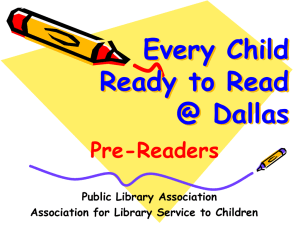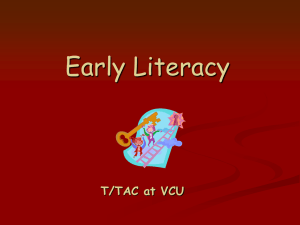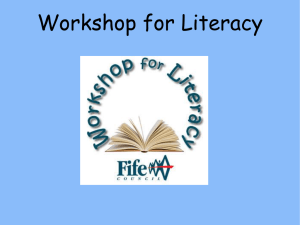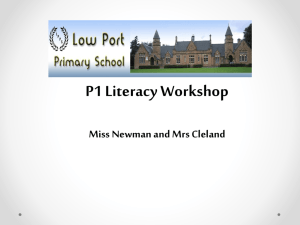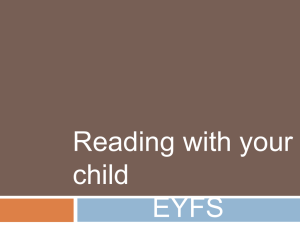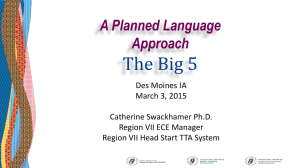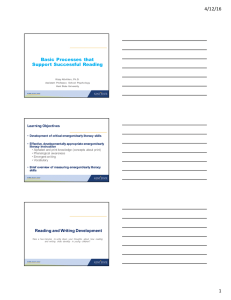Literacy Instruction for the Primary Student
advertisement
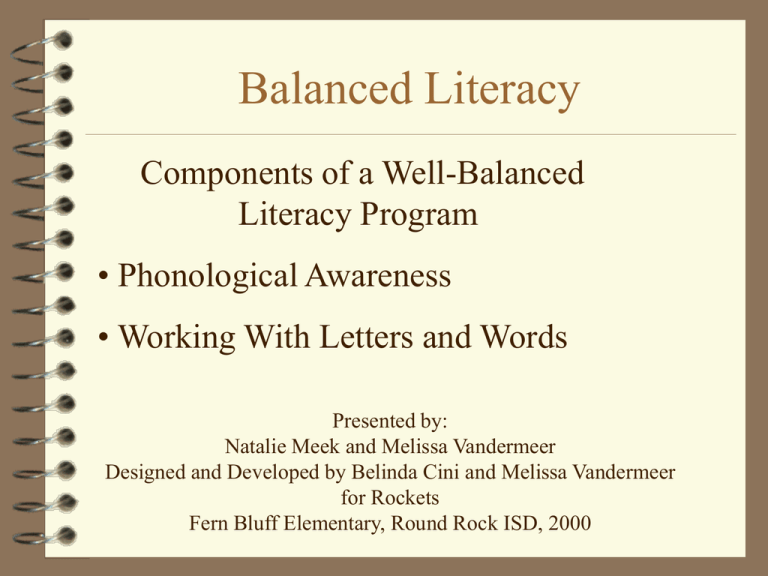
Balanced Literacy Components of a Well-Balanced Literacy Program • Phonological Awareness • Working With Letters and Words Presented by: Natalie Meek and Melissa Vandermeer Designed and Developed by Belinda Cini and Melissa Vandermeer for Rockets Fern Bluff Elementary, Round Rock ISD, 2000 Components of a Balanced Literacy Program Students will have the opportunity to: • Expand their use and appreciation of oral language. • Expand their use and appreciation of printed language. • Hear quality literature read aloud daily. • Learn about and manipulate the building blocks of spoken language. • Learn about and manipulate the building blocks of written language. Components continued... • Learn the relationship between the sounds of spoken language and the letters of written language. • Learn decoding strategies for reading. • Write daily. • Relate their writing to reading and spelling. • Practice accurate and fluent reading. • Read and comprehend a wide assortment of books and other texts in a variety of genres. Component continued... •Develop and comprehend new vocabulary through wide reading and direct vocabulary instruction. • Learn and apply comprehension strategies as they reflect upon and think critically about what they read. Approaches for Balanced Literacy Instruction The development of reading and writing skills and strategies occurs within the context of the reading and writing that children are doing in the classroom. Teachers utilize a variety of teaching approaches to effectively encourage and develop literacy. Phonological Awareness The teacher demonstrates and provides activities to develop understandings of spoken language. Letter and Word Study The teacher demonstrates and provides activities that teach students how letters work together in words and how words work together in sentences. Read To’s The teacher reads aloud daily from quality literature and models the reading process, as well as focusing on a particular teaching point emphasizing story elements, the writing craft, and/or making meaning. Shared Reading The teacher works with the whole class or a small group, reading together from a text which all students can see. Guided Reading The teacher works with a small group of students who read at the same level and demonstrate similar behaviors and instructional needs. Independent Reading Students have daily opportunities to read books at their independent reading level. Write To’s The teacher models the components of the writing process by writing pieces on a chart in front of the child, thinking aloud as she writes. Shared Writing The teacher and students compose a message together, with the teacher doing the actual writing on a chart in front of the children. Interactive Writing Similar to shared writing, the students and teacher write a piece together while “sharing the pen.” Writing Workshop This allows for guided and independent writing, as students engage in the writing process with teacher conferencing and support. What is Phonological Awareness? Phonological awareness refers to the ability to hear and manipulate the sounds that make up language. Teachers provide oral language activities that engage student in working with the sounds of letters and words. Instruction progresses through: • Rhyming • Sound blending • Syllabication • Segmentation • Phoneme isolation • Sound substitution What is Letter and Word Study? Letter and word study refers to direct instruction and focused activities designed to build alphabetic knowledge and increase a child’s understanding of how letters and words work. Teachers provide multilevel activities which enhance students’ abilities to identify and use the relationship between sounds and letters, use spelling patterns, and relate new words to known high frequency words.
